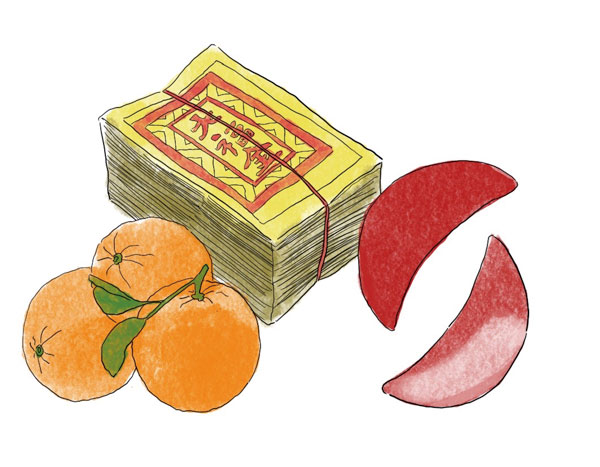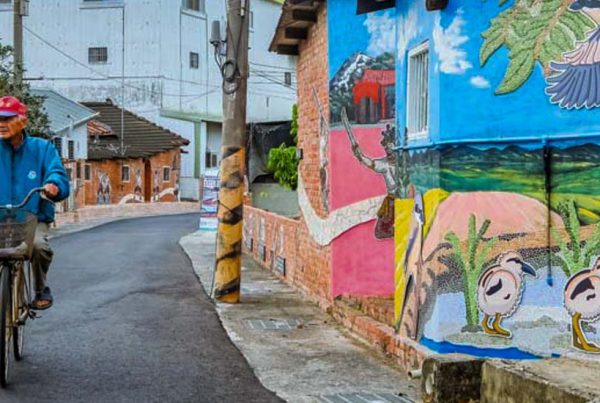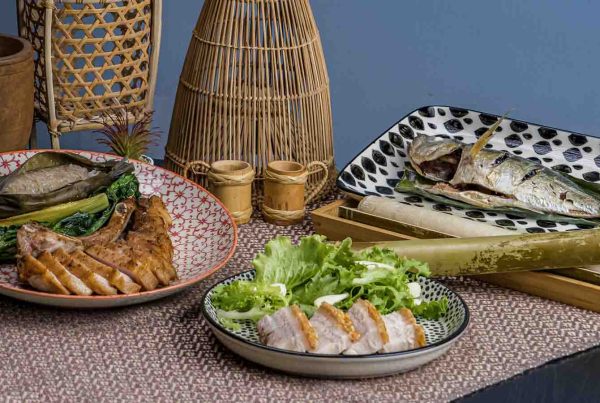Praying in Local Temples
TEXT AND PHOTOS / VISION
It is very common to hear people in Taiwan saying “bye bye” when parting, a practice adapted from the English language. Also commonly heard is the Mandarin bai bai, used when referring to praying at a Daoist, Confucian, or Buddhist temple.
While “bye bye” seems to be rather mundane, if you do a bit of etymological research you’ll find that the word “bye” is, not surprisingly, the abbreviated version of “goodbye,” which, more interestingly, is a shorter version of “God be with ye.” The Chinese character for bai (拜) shows two distinct parts that represent two hands (or one hand and a head in its earliest form), depicting fittingly how the faithful go about praying to deities in temples by putting two hands together. While it would be a stretch to say that the English salutation and the Chinese term for praying are in any way related, what they have in common is the wish of humans to be in close contact with the divine.
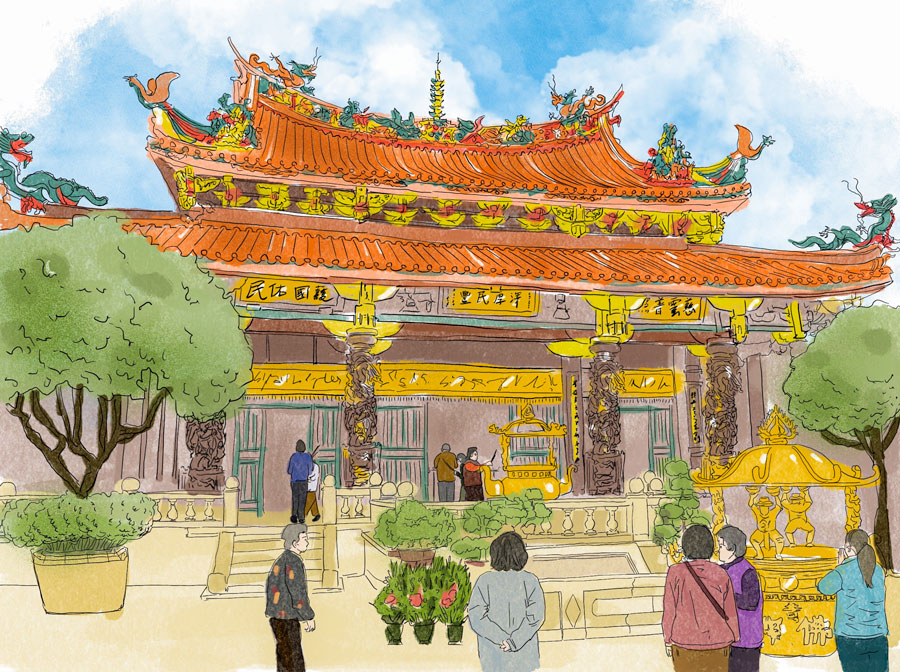
Content
Temple Etiquette
Heading to a local temple is often part of tourist itineraries, and while watching locals come to pray, you might wonder what the proper etiquette is for visiting a temple and how to go about communicating with the gods.
The most basic way to bai-bai is to stand in front of a deity, put your hands together, introduce yourself by silently giving your name, the place you live, and your birthday, and then proceed with making a request or give thanks for a blessing already received.
While this seems rather simple, there are, however, various rules to observe to get a temple visit right and stay clear of possibly offending its celestial residents. But rest assured, even if you don’t get everything right, as long as you act with sincerity and honesty while trying to show proper respect to the gods you should be fine.
Entering and Exiting
One thing easy to remember is that you are supposed to enter a temple’s main hall through the entrance on the right (also known as the dragon gate) and exit on the left (tiger gate). Often you will see stone reliefs or paintings depicting a dragon and a tiger, respectively, right at these entrances. Never walk through the entrance in the middle, which is reserved for the gods!
Holding Incense Sticks
Holding incense sticks, the preferred way is to use your left hand and wrap your right around it. The sticks are held in front of your chest, and while praying you can lean forward slightly to show respect to the god you are facing. You can put one or more incense sticks into a censer, but make sure it’s an odd number.
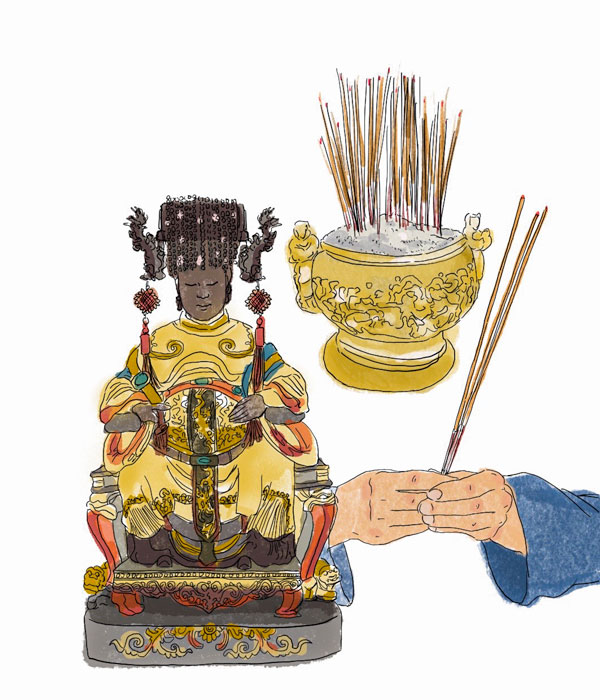
Which God First?
There is a hierarchy to be observed when intending to pray before several different deities. The highest-ranking god is the Jade Emperor, so you want to pray in front of his censer first, facing outside the temple. Next up, now facing the statues inside the temple, is the main deity of the temple, for example Mazu. Then it’s on to the altars to the side of the main deity, and, if the temple is large, to other deities in side chambers, the back hall, and other floors.
Moon Blocks
One practice at temples tourists are often especially curious about is the throwing of two crescent-shaped blocks (jiaobei) on the ground in front of a deity. Each block has a flat and a curved side. This is done by people who seek divine guidance for important decisions in their lives. By throwing the blocks they hope to get a clear answer on what to do from a god. There are three possible outcomes. If the two blocks land on the ground with both flat sides facing up, it means the god is “laughing” (xiaojiao) and is not answering the question, yet. You can throw the blocks again. If both curved sides face up (yinjiao) the next time, it means the answer to the question is “No.” If one block’s flat side and the other one’s curved side face up (shengjiao), the answer to the question is “Yes.”
